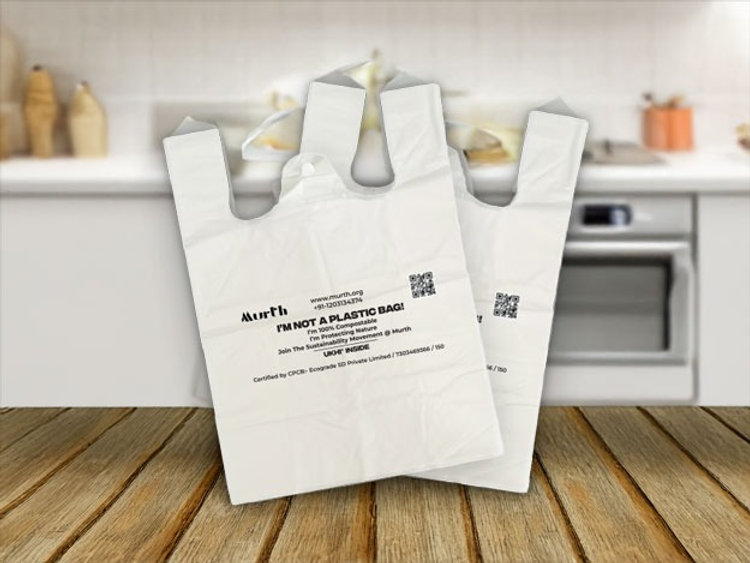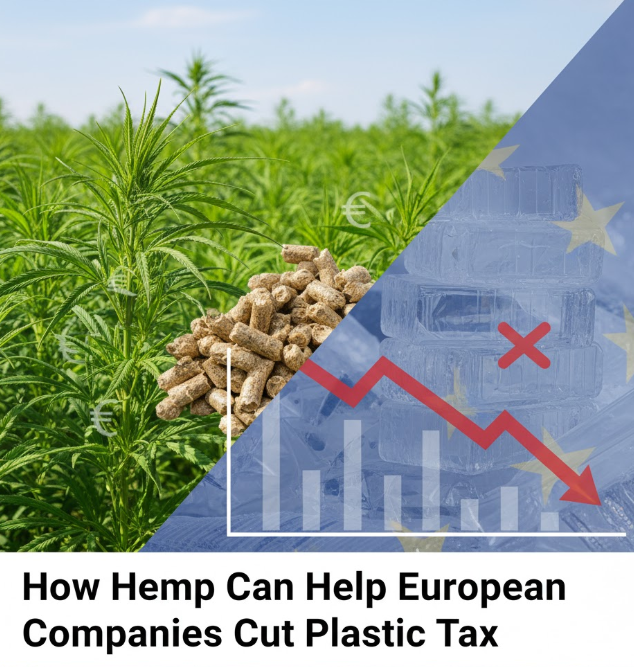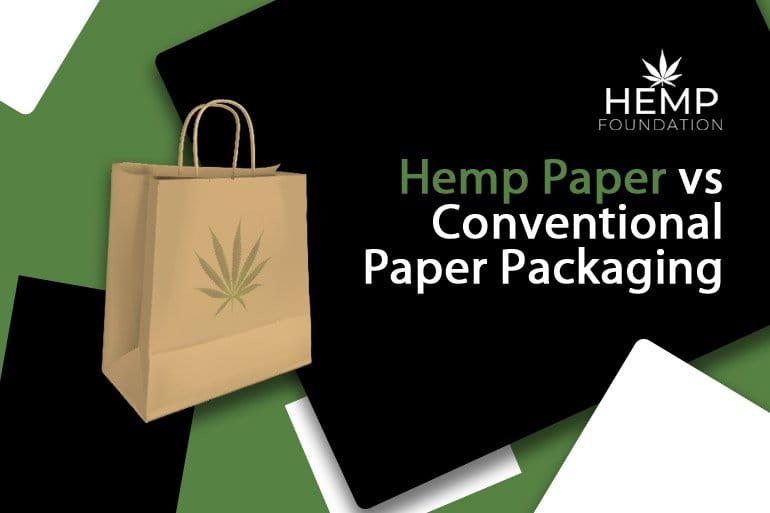How Hemp Paper Could Bring Life Back to Degraded Land
In a world increasingly dominated by screens, big and small, it is easy to forget paper.
But can anything compare to the crisp pages of a novel or the scribbled notes after a lightbulb moment?
Though paper is indispensable it is made at a tremendous cost to the environment.
Deforestation, chemical pollution, and unsustainable land-use practices take a terrible toll on Mother Earth. However, there is a suitable alternative – hemp paper.
Hemp paper has emerged as a sustainable alternative to traditional paper. In this article, we explore the role of hemp paper in restoring degraded land and replenishing the soil.
The impact of traditional paper production on land degradation
There are many ways in which traditional paper production degrades the land.
It heavily contributes to deforestation, generates toxic waste, and releases air pollution from manufacturing, making it one of the most polluting industries globally.
Let’s look at these in greater detail.
1. Deforestation and Soil Erosion: Stripping the Land Bare
The paper industry depends on wood pulp. This requires large-scale deforestation for the raw material. The sheer volume of wood required is staggering.
Producing just one ton of paper consumes approximately 17 trees.
The removal of the trees and root systems exposes the undergrowth to wind and water. The topsoil is washed away taking with it nutrients for plants.
Large-scale deforestation leads to barren landscapes as vegetation cannot grow back without the protective canopy. In places like Borneo and Sumatra, the conversion of natural forests to pulp plantations has caused massive soil degradation.
2. Toxic Waste Contamination: A Chemical Legacy
Raw wood is converted to pulp in paper mills. The pulp is then spread evenly and dries to form paper.
The process is far from being pristine. The mills use plenty of chlorine dioxide, ammonia, and heavy metals to make the paper smooth.
After the process ends these are dumped into the nearest landfill or river. In 2015, the US pulp and paper industry released 79,000 tonnes of pollutants. A staggering 24% of this went to landfills. There is little doubt that these toxic waste matters end up in the food chain and ultimately are ingested through food and water.
3. Monoculture Plantations: An Oversimplified Ecosystem
To meet the growing demand for paper, dense forests are being replaced with monoculture pulpwood plantations.
Natural forests have a mix of flora and fauna species. Together they form complex ecological systems. This gives it resilience. If one species is impacted by a change, others can still contribute to the overall health of the forest.
For making paper, forests are cleared and replaced by softwood trees. This simplified ecosystem is unable to sustain many species resulting in a loss of biodiversity. What follows is land degradation.
In recent years, India has lost 97.85 million hectares of land to degradation. This is 2.5 times the size of Rajasthan.
This frightening trend cannot be allowed to continue and it is time for a green paper industry to take shape.
Exploring the environmental benefits of hemp paper
Hemp offers a sustainable alternative to traditional wood pulp paper. The hemp plant is a variety of the Cannabis sativa species.
Hemp is a hardy plant and it can tolerate a wide range of growing conditions. It easily grows in less-than-ideal soil, making it ideal for arid regions. Hemp paper is made from the fibrous stalks of the hemp plant. The fibers are processed into pulp, which is then used to make hemp paper.
By shifting to hemp for eco-friendly paper production, we can address the key issues caused by the traditional paper industry.
Combating Deforestation and Erosion
Do you know hemp matures in just 90–120 days? This is significantly faster than softwood trees, which take many years.
Over a decade an acre of hemp can produce far more paper pulp than an acre of trees. This huge productivity can completely remove the need for further deforestation.
Hemp has deep roots, over two meters in length. These penetrate deep inside the soil and bind it firmly. Using hemp in land restoration efforts could transform barren land into fertile, productive soil.
Eliminating Chemical Pollution
The traditional paper industry heavily depends on harmful chemicals to bleach wood pulp and remove lignin. These chemicals contribute to soil and water pollution.
But hemp has 85% cellulose, the main raw material for paper production. Compare this to 30% we can obtain from wood pulp and it is easy to see why hemp paper is environment friendly.
Hemp also has a lower lignin content. It has 5-20% lignin compared to 20–35% in wood. Thus making hemp paper requires very little bleaching.
Restoring Soil Health
Hemp farming benefits include soil phytoremediation. The deep and extensive root system can extract and absorb pollutants from deeper soil layers.
That is not all. Hemp shives can be used as mulch to help maintain soil moisture and suppress weeds. Cultivation of hemp also causes diverse kinds of microbes to grow which ultimately improve soil health.
Unlike monoculture tree plantations, hemp can be grown in crop rotations with other plants, such as beans and potatoes. This enhances biodiversity and ecological balance within the cultivated area.
It is important to note, that unlike traditional paper, hemp paper is highly resistant to decomposition and does not yellow with age. Nor does hemp paper turn brittle after a few years of exposure.

The sturdiness of hemp paper makes it ideal for making shipping packaging, paper bags, and tubes.
Choose hemp paper for a brighter tomorrow.
It’s true that our focus is soil degradation and how hemp paper can help prevent it. But we cannot overlook the other benefits of hemp cultivation.
Hemp paper processing can breathe new life into rural economies by creating jobs in cultivation, processing, and manufacturing.
The transition to the hemp paper industry requires collaboration between policymakers, the government, manufacturers, and the rural populace. By choosing biodegradable paper solutions, businesses can reduce their reliance on plastic and accompanying pollution.
As a consumer, you too have a role to play. By actively choosing hemp paper you commit to greater sustainability.
Come and join this movement for an environmentally responsible paper industry.
Vishal Vivek
Vishal Vivek is the Founder and CEO of Ukhi, a pioneering bio-materials company dedicated to ending plastic pollution by converting agricultural waste into high-performance compostable polymers. With a background in sustainable entrepreneurship and over a decade of technology experience, he leads Ukhi’s vision to create scalable, planet-positive material solutions. Previously, Vishal founded the Hemp Foundation, where he empowered more than 1,000 farmers and advanced sustainable livelihood initiatives. His work has been recognized through awards such as the HDFC Parivartan Grant and featured in leading publications like Forbes and Entrepreneur. Times Group recognized him as a legendary entrepreneur and published his biography in “I Did IT- Vol 2” alongside social pioneers like Bindeshwar Pathak (Sulabh International) and Anshu Gupta (Goonj). Vishal has authored more than 200 articles on sustainability and hemp, reflecting his deep expertise and advocacy for regenerative solutions. His commitment to grassroots impact led him to live in the remote mountains of Uttarakhand, where he immersed himself in the lives of marginal farmers, understanding their challenges and co-creating economic opportunities through hemp-based initiatives. A deeply passionate innovator, Vishal often draws inspiration from seemingly impossible achievements: “If Elon Musk can make rockets reusable, or Dashrath Manjhi can carve a path through a mountain with rudimentary tools, why can’t we eliminate the demon of single-use plastic while uplifting struggling farmers? We will make it happen—whatever it takes.” Ukhi is proud to be supported by premier institutions including IIT Guwahati, NSRCEL-IIM Bangalore, Indian School of Business (Hyderabad), Indian Council of Agricultural Research (ICAR Pusa), and the Indian Institute of Packaging. Vishal is committed to demonstrating that business can be a powerful catalyst for global environmental and social good. Connect with Vishal Vivek
Related Posts
How Hemp Becomes Fabric – A Step-by-Step Explanation
Hemp is one of the oldest textile fibers in the world, but it’s also one of the most misunderstood
Hemp Paper vs Conventional Paper Packaging
[vc_row][vc_column][vc_column_text]Choosing a greener and more sustainable alternative In the 1900s




